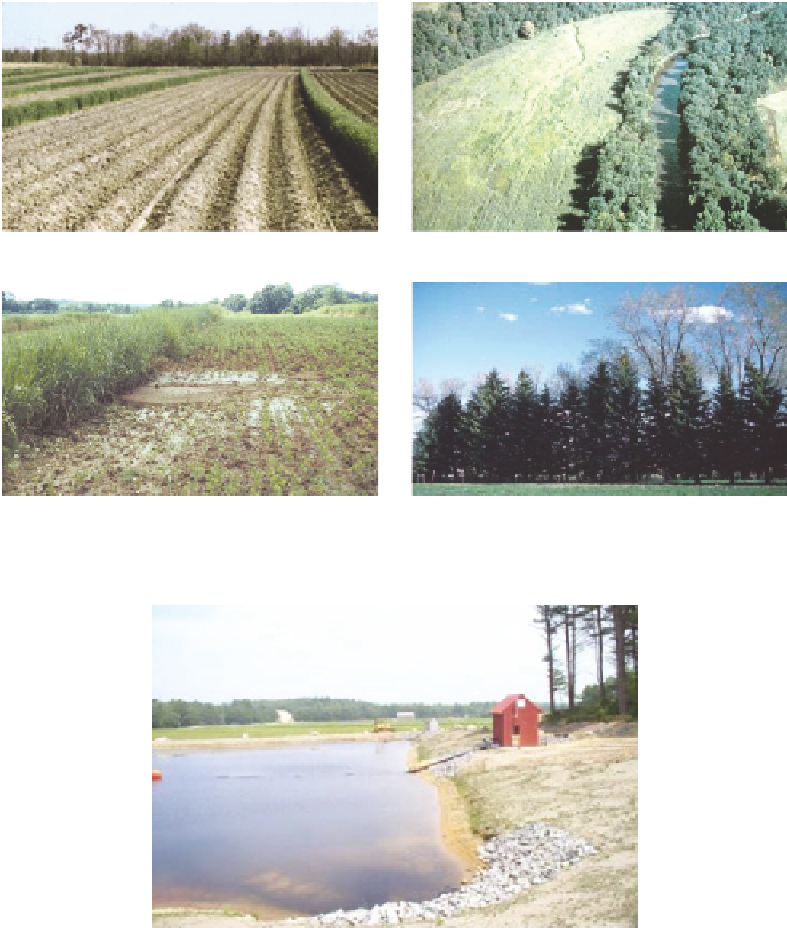Environmental Engineering Reference
In-Depth Information
Herbaceous wind barriers
Riparian forest buffer
Vegetative barrier
Windbreak/shelter belt establishment or renovation
FIGURE 8.13
Additional examples of conservation buffers. (From NRCS Conservation Practice Standards.)
FIGURE 8.14
Example of a tailwater recovery/reuse system. (From NRCS Conservation Practice Standard
4 47.)
amounts of sediment. For example, Marlin (2001) indicated that during the past century, sediment
has illed over 70% of the volume of the Illinois River backwaters and side channels.
To restore backwater habitats, dredging is used to remove the sediment and aid in maintaining
water movement. Backwater dredging typically consists of dredging channels that extend out from
the main cut. The depth and size of the dredge cut depend on several site-speciic factors. Two
common dredging methods are mechanical and hydraulic. Mechanical dredging involves using
some form of device (e.g., backhoe, clamshell, or dragline) to scrape and remove sediment from
the stream. It works well with hard compacted sediment but can leave ine soils behind. Hydraulic
dredges (such as the cutterhead dredge) generally pump the sediment from the river and, unlike
mechanical dredging, they can place the material directly into a placement site. Hydraulic dredging
also allows for the ability to pump almost continuously, which results in higher production rates

Search WWH ::

Custom Search